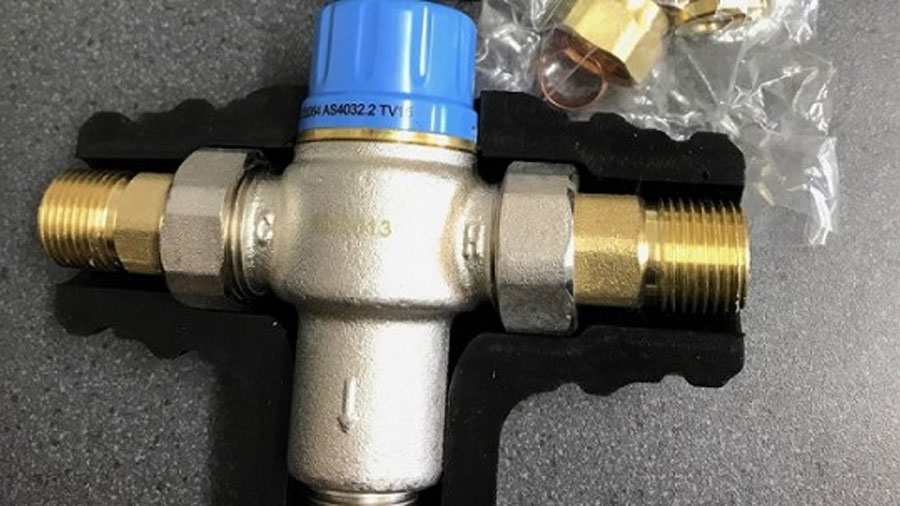
What is a Tempering Valve?
Have you ever wondered why hot water from a tap never comes out at a boiling temperature?
When you let it run, it will always get uncomfortably hot. But it never reaches a temperature where it can cause any real harm.
It’s not one of life’s great mysteries. This is all thanks to the tempering valve.
Not many people have heard of it, but the tempering valve is perhaps the most important part of your hot water system. It not only keeps you safe when you stick your hand under running hot water, but it protects you in other ways too.
Here’s everything you need to know about this fascinating object and why you need to ensure your tempering valve is always working correctly.
How Does a Tempering Valve Work?
A tempering valve is able to combine the correct amount of hot and cold water together before it gets released from a tap or outlet. Even while it’s running, it continues to blend the water so that the temperature remains constant and doesn’t burn you or give you the chills.
Why Do You Need a Tempering Valve?
You have no choice when it comes to deciding if you need a tempering valve. It’s required as part of the Plumbing Code of Australia policies.
Besides getting the balance of hot and cold water right, a tempering valve also helps prevent the growth of bacteria — particularly Legionella bacteria, which is responsible for Legionnaires’ disease. The code requires that any stored hot water must be kept at a minimum temperature of sixty degrees Celsius.
For certain facilities that house disabled people or young kids, the code requires the use of a tempering valve to ensure water doesn’t exceed forty-five degrees Celsius when it’s used for personal hygiene. In all other types of properties, the maximum temperature can be fifty degrees Celsius.
Is There a Difference Between a Tempering Valve and Thermostatic Mixing Valve?
Tempering and thermostatic mixing valves (TMVs) perform the same task in ensuring that water exits an outlet at the appropriate temperature. But there are still some significant differences you need to be aware of if you prefer to use this particular device. Some include:
- You’ll need to find a plumber that has a specific TMV licence meaning they’re capable of installing it
- TMVs can respond to temperature changes much faster than a tempering valve. This makes them ideal for schools, hospitals, and nursing homes where hot water can cause serious injury to specific individuals
- TMVs might last longer, but tempering valves are significantly cheaper to install
- It’s much easier to repair a TMV when something goes wrong, whereas a plumber will have to replace a tempering valve when it stops working
If you’re unsure about which valve is right for your situation, you should speak to a plumber who is knowledgeable about both objects. They will be able to provide you all the necessary information in line with the appropriate building codes and plumbing requirements.
What Types of Tempering Valves Are There?
There is no one size fits all when it comes to tempering valves. The right one is dependent on the type of hot water system you have and how large it is. Thankfully, they’re easily identifiable through colour. Here’s how you’ll know which one is right for you:
- A black cap tempering valve is most often used for any large capacity hot water systems
- An orange cap tempering valve is ideal for heat pump hot water systems as well as solar ones
- Green cap tempering valves will get used for hot water systems that run on gas
- There’s also a blue cap tempering valve that is for electric water heaters
Even though you know which tempering valve is right for the different hot water systems, you should only allow a licensed plumber to install or replace this item. As there are regulatory requirements when it comes to hot water temperatures, they will be the best people to ensure that everything is up to code and safe for everyone inside the property.
What Should You Do When a Tempering Valve is Broken?
A tempering valve is an essential component of your hot water system. Whether you’re installing a new one, moving it to another property, or replacing a unit, you should ensure that only a licensed plumber touches this item.
You should also check with these professionals if a tempering valve or a thermostatic mixing valve is right for your particular situation. Even though they are more expensive, they respond quickly to temperature changes and can get repaired instead of needing to be replaced.
If you do need your tempering valve replaced, then All Day Plumbing can help. We’re available 24/7, so it doesn’t matter how early or late you need us. We can replace your tempering valve or fix your hot water system at any time of day. Contact us today for this or any other plumbing job that you might need.